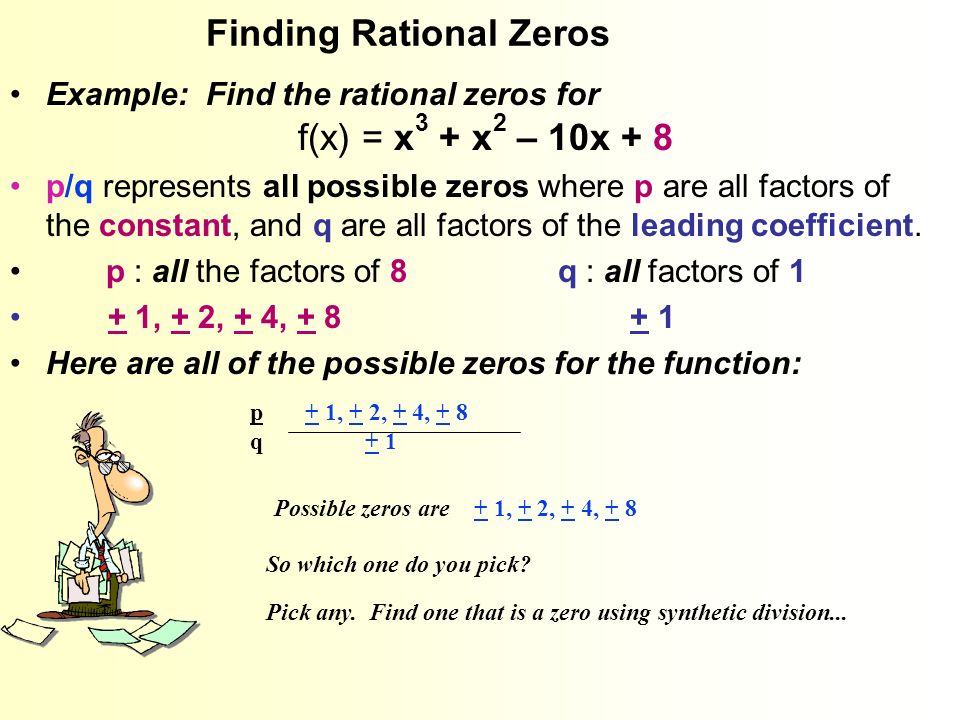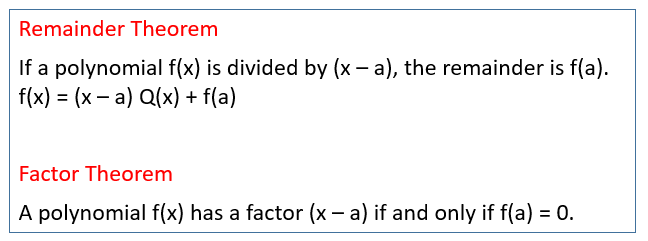P Over Q Method And Synthetic Division To Factor The Polynomial
Synthetic division is generally used however not for dividing out factors but for finding zeroes or roots of polynomials. More about this later.

Use Long Division To Divide Polynomials College Algebra
The point of the factor theorem is the reverse of the remainder theorem.

P over q method and synthetic division to factor the polynomial. No need for synthetic division which can be tedious at best. We can use the rational zeros theorem to find all the rational zeros of a polynomial. Use the p over q method and synthetic division to factor the polynomial px.
Can be obtained from the trial values pq of 1 2 5 and 10 when substituted into the polynomial and giving px 0. If px is a polynomial with integer coefficients and if is a zero of px p 0 then p is a factor of the constant term of px and q is a factor of the leading coefficient of px. Consequently the polynomial has 2 rational roots.
In general you can skip the multiplication sign so 5 x is equivalent to 5 x. Synthetic division is a shorthand or shortcut method of polynomial division in the special case of dividing by a linear factor and it only works in this case. Use the p over q method and synthetic division to factor the polynomial px then solve px0.
Login to reply the answers post. X 1 and x 1 are the only rational zeros of the polynomial p x. If you synthetic divide a polynomial by x a and get a zero remainder then not only is x a a zero of the polynomial courtesy of the remainder theorem but x a is also a factor of the polynomial.
Every rational root of p x is one of the following 4 choices. Your question specifically says to use the pq method and synthetic division to factor the polynomial. These are the only four numbers with p dividing 2 and q dividing 1.
The calculator will divide the polynomial by the binomial using synthetic division with steps shown. And that polynomial has a single root which is not rational so it wouldnt help much. And so the solution of px0 is x 1 2 3 or 5.
We can now check each one of them. The synthetic division this time leaves us with the quadratic polynomial x28x15 which factors easily tox3x5. Then solve px0 pxx34x2x 6 found 2 solutions by boreal mathlover1.
E3x is e 3 x and e 3x is e 3 x. Try px x3 6x2 3x 10 x 5x 2x 1 all roots 5 2 and 1 can be obtained from the trial values pq of 1 2 5 and 10 when substituted into the polynomial and giving px 0. In general you can skip parentheses but be very careful.

Finding Rational Zeros Using The Rational Zeros Theorem

Real Zeros Of Polynomial Functions Ppt Video Online Download

Algebra Zeroes Roots Of Polynomials 1 6 Math 1050 Usu Studocu

Factor Theorem Solutions Examples Videos
Https Www Scasd Org Cms Lib Pa01000006 Centricity Domain 1229 Chapter 02 Polynomial And Rational Functions Pdf

Zeros Of Polynomial Functions Pdf Free Download
Finding Real Zeros Of Polynomial Functions Ck 12 Foundation

More Polynomial Equations Math 11009 Modeling Algebra Studocu
Polynomials
